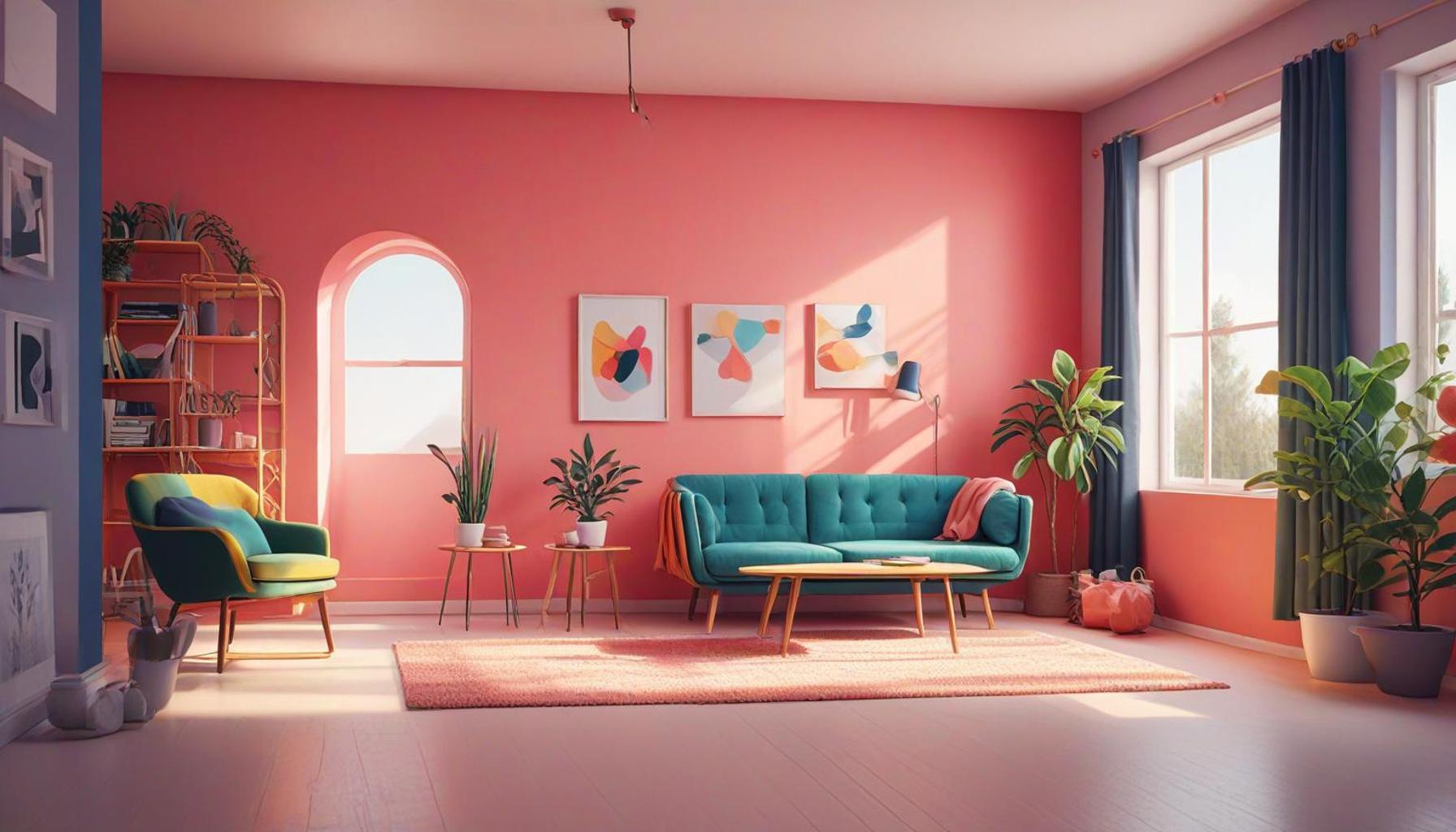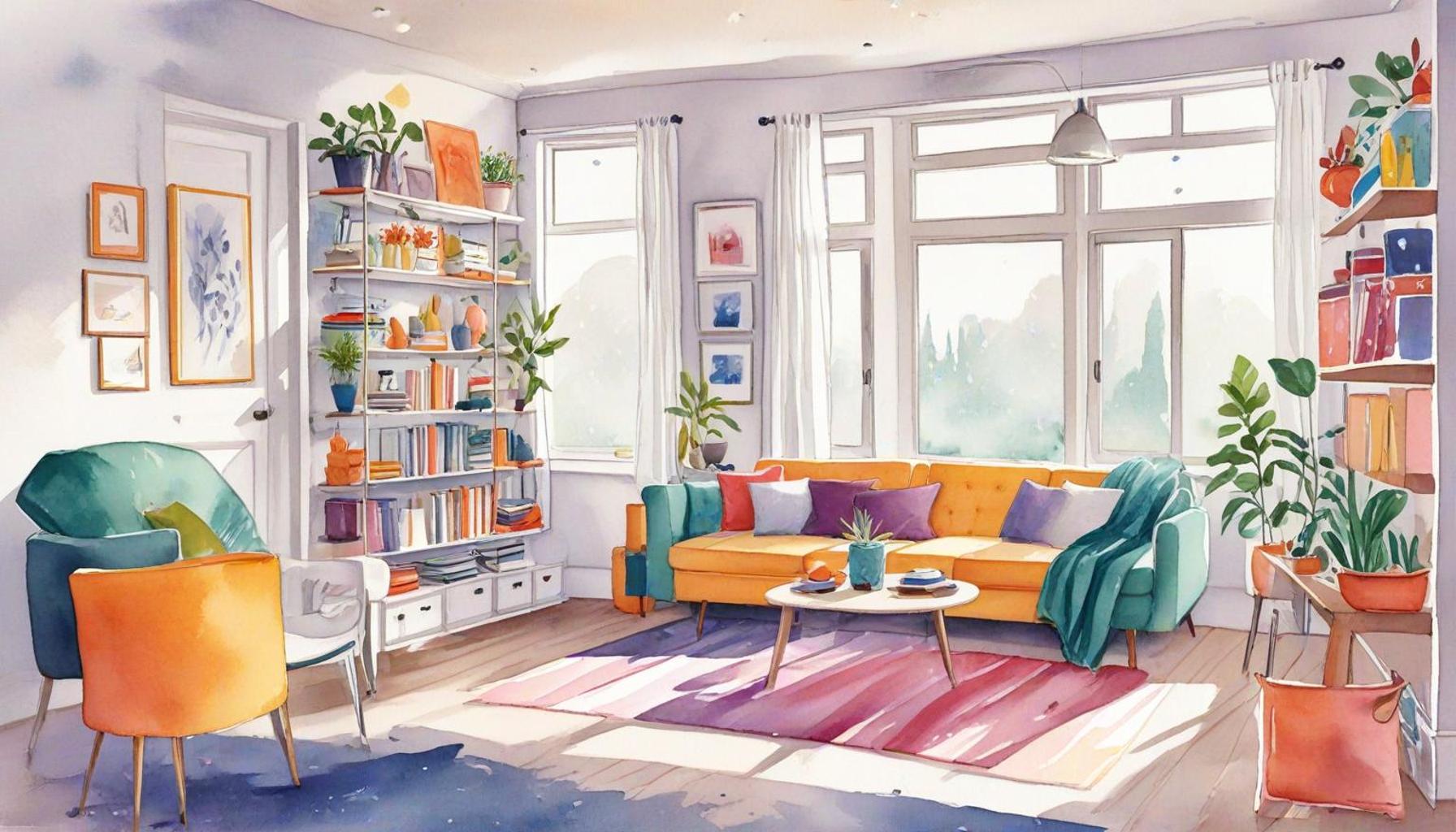How Intentional Design Can Enhance Productivity in Personal Organization

Unlocking Your Potential
In today’s fast-paced world, the quest for productivity is more vital than ever. Intentional design plays a crucial role in shaping how we structure our personal organization. By focusing on strategic design elements, we can significantly improve efficiency and clarity in our daily lives. This transformation begins by understanding how our environments can enhance our ability to perform tasks and manage our time effectively.
The Power of Design
When thinking about personal organization, consider these essential components:
- Clarity: Clear layouts lead to better understanding and navigation of tasks. A well-organized workspace, with clearly labeled sections for different activities, can reduce time spent searching for materials and enhance focus. For instance, a shared office might designate specific areas for brainstorming, discussions, and deep work, allowing team members to know where to find the right environment for their current task.
- Functionality: Design should serve a purpose, allowing tools to work seamlessly together. This can be achieved through using planners that integrate digital calendars or employing app systems that allow for easy task transfers. For example, a simple integration between project management tools and email can ensure that nothing slips through the cracks and that every team member stays aligned on project objectives.
- Aesthetics: An appealing environment can inspire creativity and motivation. Imagine a workspace decorated with inspiring artwork and plants that provide a sense of tranquility. Studies have shown that environments that are aesthetically pleasing can boost mood and, in turn, productivity levels. Therefore, investing in good lighting, ergonomic furniture, and personal touches can be more than just a luxury; they are essential for cultivating an energetic work environment.
Statistics suggest that individuals who implement intentional design strategies in their daily routines experience up to 30% increased productivity. Interestingly, this concept goes beyond mere aesthetics; it’s about crafting environments that foster focus and reduce distractions. By streamlining workspaces, individuals can better manage their tasks and foster a more conducive atmosphere for creativity.
Examples to Consider
You’ll find that effective design can manifest in various ways, such as:
- Dedicated workspaces free from clutter, which can be anything from a clean desk in a quiet corner of a room to a fully-equipped home office.
- The use of color coding for task prioritization, which simplifies the decision-making process and allows you to quickly assess which tasks require immediate attention. Color-coding can also provide a sense of achievement as you complete tasks—visual cues often motivate us to continue.
- Digital tools that streamline planning and task management, like Trello or Notion, which not only centralize project information but also allow for design customization that suits individual work styles.
As we delve deeper into the principles of intentional design, you’ll see how it can transform your approach to personal organization, making your workflow more efficient and effective. The journey towards productivity isn’t merely about the number of tasks completed; it’s about fostering an environment that supports your goals and nurtures your potential. Embrace intentional design, and watch as you unlock new heights in your personal and professional life.
DIVE DEEPER: Click here to learn more
Strategies for Intentional Design
To truly harness the power of intentional design in personal organization, it is essential to adopt specific strategies that align both our physical and mental environments with our productivity goals. Here are several key approaches:
- Zone Your Space: Creating designated zones within your workspace can streamline focus. For example, separate areas for reading, work, and creative brainstorming help to mentally transition between tasks. A well-defined structure allows individuals to switch gears without mentally cluttering their minds, enhancing overall productivity.
- Minimalism for Maximum Efficiency: Embracing a minimalist approach can drastically reduce distractions. By keeping only essential tools within arm’s reach, you can maintain clarity and focus. Consider decluttering your desk weekly, or even daily, to ensure it remains conducive for high-quality work. This strategy not only improves your workspace but can also transform your mindset, fostering a sense of calm and clarity.
- Incorporate Technology Wisely: Intentional design involves using technology to enhance productivity, rather than detract from it. Tools like time-tracking apps can provide insight into how your time is spent, while to-do list applications can help prioritize daily tasks. Utilize these digital tools mindfully, ensuring they complement your workflow rather than create additional chaos.
- Utilize Visual Reminders: Implement visual cues such as sticky notes for key tasks or visual project boards. These reminders can keep critical objectives front and center, significantly improving task focus and follow-through. Studies have shown that visual stimuli can activate memory pathways, making it easier to recall tasks and deadlines.
- Ergonomics Matter: Investing in ergonomic furniture and tools allows for sustained concentration over longer periods. Whether it’s a supportive chair or an adjustable desk, physical comfort significantly impacts productivity. Remember, discomfort can serve as a distraction; thus, creating a physically supportive workspace can lead to better performance.
As you begin applying these strategies, it’s important to regularly evaluate their impact on your productivity. Engaging in self-reflection allows you to adapt and modify your organizing techniques until they strike the right balance for your unique needs.
Measuring Success
To determine the effectiveness of intentional design in enhancing productivity, consider implementing measurable goals. Track your completion rate of daily tasks, or gauge how many projects you finish within a set period. By establishing clear metrics, you can identify patterns and adjust your strategies accordingly. This tailored approach not only promotes accountability but also fosters personal growth on your productivity journey.
In a world where distractions abound, implementing intentional design principles becomes a vital tool in your arsenal for improved personal organization. The quality and structure of your environment influence the way you approach tasks, ultimately setting the foundation for your success.
Adopting Intentional Design in Personal Organization
In the realm of personal organization, intentional design plays a pivotal role in not just enhancing productivity but also fostering a sense of clarity and focus in one’s daily tasks. This approach involves thoughtfully considering each element that contributes to the organization system—be it tools, layouts, or routines. By tailoring these components to fit individual needs, users can experience an immediate uplift in efficiency and overall well-being.
Visual Hierarchy and Clarity
One of the key advantages of intentional design is creating a visual hierarchy that resonates with users. This means arranging spaces and tools in a way that accentuates important tasks, enabling individuals to prioritize their work intuitively. For instance, using colors to categorize tasks or employing minimalist layouts can significantly cut down distractions, prompting a more streamlined workflow.
Enhanced Focus through Minimalism
Minimalism, a principle often aligned with intentional design, encourages individuals to eliminate excess and focus on what’s essential. By reducing clutter—be it physical items or digital files—users can allocate their cognitive resources to more pressing projects. Studies have shown that a decluttered workspace can lead to improved concentration, thus directly contributing to heightened productivity levels.
Incorporating Ergonomics
Moreover, integrating ergonomic principles into personal organization aids in creating a comfortable workspace. Factors such as adjustable furniture and optimized layouts can minimize physical strain, thereby enhancing productivity. When individuals are physically at ease, they are more likely to maintain steady work rhythms and pursue tasks with greater enthusiasm.
Iterative Design Practices
Finally, adopting an iterative approach to design can significantly benefit personal organization. Regularly reviewing and adjusting organization tools or methods allows for continuous improvement. By staying attuned to what works well and what does not, individuals can refine their systems, ensuring they remain effective over time.
| Category | Advantages |
|---|---|
| Visual Hierarchy | Enhances focus on priority tasks. |
| Minimalism | Reduces distractions, improving concentration. |
| Ergonomics | Increases comfort and productivity in the workspace. |
| Iterative Practices | Encourages continuous improvement and adaptability. |
Incorporating these strategies through intentional design transforms personal organization from a mundane task into a tailored experience that promotes productivity and fosters a rewarding lifestyle.
DISCOVER MORE: Click here for effective organization tips
Creating a Sustainable Routine
While adopting intentional design strategies for personal organization is essential, integrating these elements into a sustainable daily routine is equally vital. Establishing habits that align with your organized environment can lead to enhanced focus and improved productivity outcomes. Here are some effective methods to foster a routine that promotes intentionality:
- Morning Rituals: Start your day with intentional morning rituals that set a positive tone for productivity. This may involve a quick review of your daily goals, a mindfulness practice such as meditation, or even organizing your workspace for the day ahead. Research has shown that a well-structured morning significantly impacts productivity levels and sets the stage for a focused day.
- Time Blocking: Employ the time-blocking technique to allocate specific periods for different tasks. By intentionally designing your calendar, you can create a structure that prevents multitasking and encourages deep work. For example, designate a two-hour window for project development, followed by a brief break to recharge. This method promotes focused effort while reducing the overwhelm associated with a packed schedule.
- Evaluate and Adjust: A key aspect of sustainable organization is the practice of regular evaluation and adjustments. Consider dedicating time weekly or monthly to assess the effectiveness of your strategies. Are certain spaces in your workspace still cluttered? Are specific routines failing to yield results? By refining your approach, you can optimize your environment continually, leading to enhanced personal organization.
- Accountability Partnerships: Share your goals with a colleague or friend who can help keep you accountable. This collaborative approach encourages proactive check-ins and constructive discussions about your routines and organization strategies. Research indicates that accountability can foster a sense of commitment, ultimately enhancing productivity levels.
- Reflective Journaling: Implement daily or weekly journaling as part of your organizing routine. Reflecting on what strategies worked, what didn’t, and what could be improved allows you to gain insights into your productivity habits. This practice can also help identify emotional or mental barriers that deter focus, paving the way for intentional adjustments.
Categorizing Tasks for Focus
Intentional design can also extend to how you categorize and approach tasks. By creating a productive taxonomy for your projects and to-do lists, you can increase efficiency and clarity:
- Prioritize by Urgency and Importance: The Eisenhower Matrix is an effective tool for categorizing tasks based on urgency and importance, helping you to focus on what truly matters. By identifying tasks that require immediate attention versus long-term goals, you can allocate your energy in a more intentional manner.
- Chunking Tasks: Break larger tasks into smaller, manageable chunks. This technique not only reduces feelings of overwhelm but also allows you to experience a sense of achievement as you complete each segment. Consider applying the Pomodoro Technique, where you work in focused bursts and take regular breaks, to further enhance your productivity.
- Incorporate Downtime: Intentional design doesn’t just apply to work; it also involves recognizing the need for regular downtime. Schedule short breaks during the day or dedicated time for relaxation. Studies show that regular breaks can lead to improved focus post-break and contribute to overall productivity.
By weaving these habits and categorizations into your daily life, you create not only a productive environment but also a sustainable routine that aligns with your goals. The power of intentional design lies in its ability to adapt seamlessly into your organizational methods, thereby enhancing productivity in the long run.
DISCOVER MORE: Click here to uncover effective decluttering strategies
Conclusion
In the quest for peak productivity, intentional design stands as a powerful ally in the realm of personal organization. By carefully crafting your environment and routines, you can create a systematic approach that fosters greater efficiency and clarity in your daily tasks. The strategies discussed—from establishing morning rituals to implementing time blocking and the Eisenhower Matrix—demonstrate that a thoughtful design isn’t merely aesthetics; it profoundly influences your ability to focus and succeed.
Moreover, the integration of sustainable habits, such as regular evaluation and accountability partnerships, ensures that your organization efforts remain adaptive and responsive to changing demands. Recognizing the significance of categorizing tasks and allowing for downtime cannot be overstated; these components collectively nurture a holistic approach to productivity that honors both challenge and rest.
As we continue to navigate an increasingly complex world, the call to design with intention becomes all the more relevant. By embracing these principles, we position ourselves not only to achieve our goals but also to cultivate a fulfilling and rewarding work-life balance. As you explore these techniques, consider how you might personalize your journey for optimal impact. The transformation begins with an intention—turning spaces and routines into catalysts for productivity. Venture forth and redefine your personal organization with these principles, and watch as your productivity blossoms into new realms.


